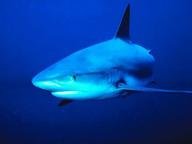Quiz Answer Key and Fun Facts
1. What does the great white shark (Carcharodon carcharias) have five of?
2. Which of the world's oceans can the great white shark be found in?
3. The great white shark is classified as a Lamnidae. What does this mean?
4. Great white sharks have a white underbelly and a grey, brown or blue dorsal area. What is this type of camouflage coloring called?
5. Which is larger, the male great white shark or the female?
6. When the great white shark is hunting prey, why does it release the prey after the initial bite?
7. Based on its place in the food chain, what type of predator is a great white shark considered to be?
8. During the fourteen to eighteen month gestation period of a great white shark, which unusual behavior are the unborn pups suspected of engaging in?
9. In which fashion does a great white shark bite?
10. The great white shark, like all sharks, is a cartilaginous fish. What does cartilaginous mean?
Source: Author
funnytrivianna
This quiz was reviewed by FunTrivia editor
crisw before going online.
Any errors found in FunTrivia content are routinely corrected through our feedback system.

